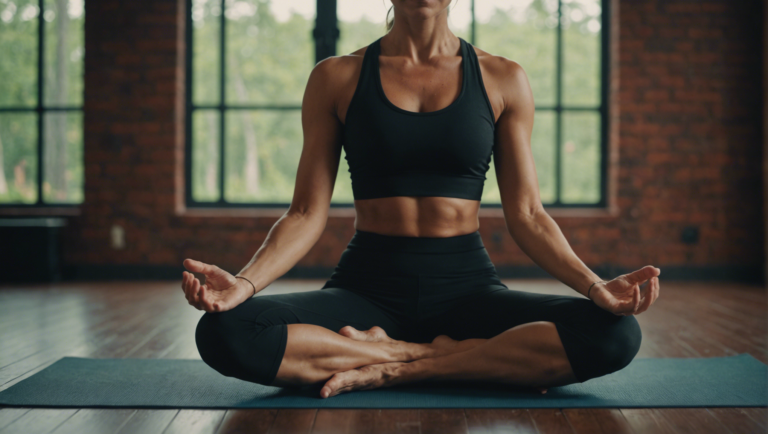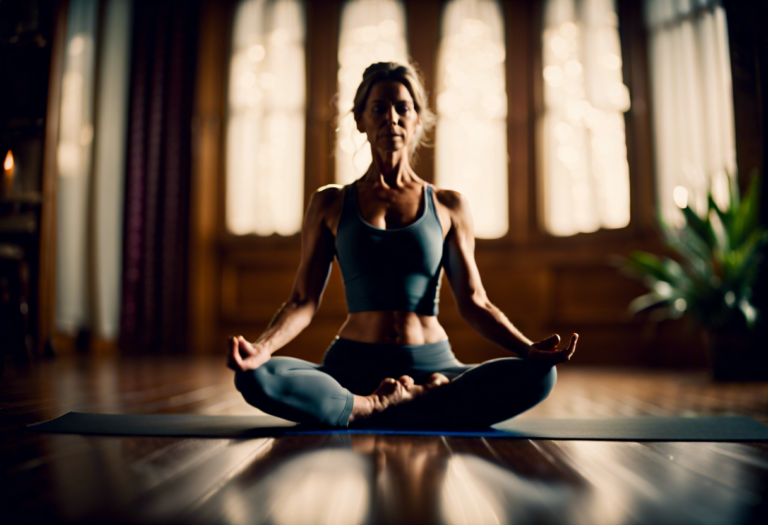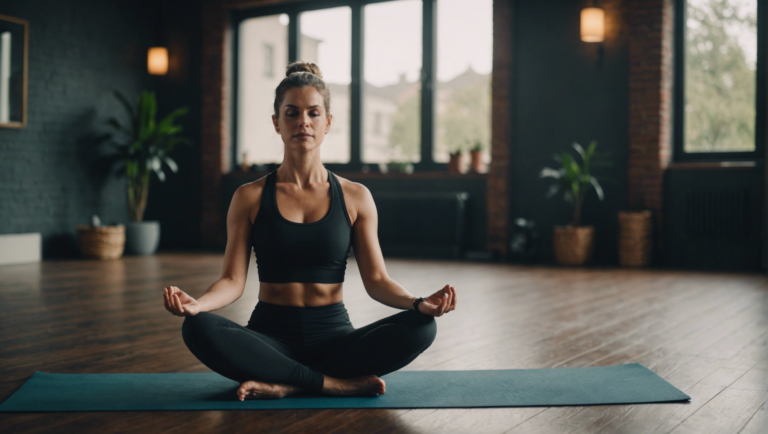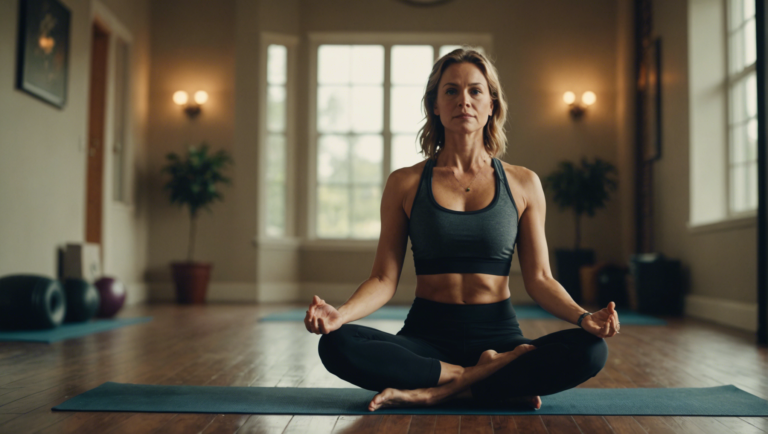Understanding The Differences: A Comprehensive Guide To Hatha Yoga And Vinyasa Yoga
Key Differences Between Hatha Yoga and Vinyasa Yoga
Understanding Hatha Yoga and Vinyasa Yoga
Hatha Yoga and Vinyasa Yoga are two popular styles of yoga that offer different approaches to the practice. While both aim to enhance physical and mental well-being, they vary in terms of pace, structure, and focus. Understanding the differences between these two styles can help practitioners choose the one that best suits their needs and preferences.
Origins and Philosophy
Hatha Yoga, originating in India, is a traditional form of yoga that focuses on physical postures (asanas) and breathing techniques (pranayama) to bring balance between the body and mind. It emphasizes static poses and holding them for a longer duration to build strength, flexibility, and concentration.
On the other hand, Vinyasa Yoga is a more dynamic and flowing style of yoga that synchronizes movement with breath. It is derived from Hatha Yoga but incorporates a more vigorous and fast-paced sequence of poses. The word "Vinyasa" translates to "breath-synchronized movement," highlighting the importance of linking each movement to an inhale or exhale.
Practice and Postures
In Hatha Yoga, poses are typically held for a few breaths to several minutes, allowing practitioners to focus on alignment, stability, and the subtle effects of the pose on the body. This deliberate and slower-paced approach is ideal for beginners or individuals looking to refine their practice with attention to detail.
Vinyasa Yoga, on the other hand, involves a continuous flow of movements where each pose seamlessly transitions into the next. The practice is dynamic and energetic, incorporating sun salutations and variations that promote cardiovascular health, muscle tone, and overall vitality. Vinyasa classes often follow a theme or sequence, providing a sense of fluidity and creative expression in the practice.
Breath Awareness and Meditation
Both Hatha and Vinyasa Yoga place importance on breath awareness, but they integrate it differently into their practices. In Hatha Yoga, the focus is on using the breath to deepen into poses, release tension, and create internal space for meditation and reflection. The emphasis is on conscious breathing to facilitate mindfulness and presence on the mat.
Vinyasa Yoga uses breath as a foundational element to guide movement and create a sense of flow. Practitioners coordinate each inhale and exhale with specific poses, promoting a moving meditation that helps in cultivating focus, clarity, and vitality. The continuous rhythm of breath in Vinyasa Yoga acts as a moving meditation that synchronizes body and mind.
Choosing the Right Style for You
When deciding between Hatha Yoga and Vinyasa Yoga, consider your fitness level, preferences, and goals for practicing yoga. If you are new to yoga or prefer a slower-paced, alignment-focused practice, Hatha Yoga may be more suitable for you. On the other hand, if you enjoy movement, creativity, and a more dynamic experience, Vinyasa Yoga could be the perfect choice.
Both styles offer unique benefits for the body and mind, so exploring both can provide a well-rounded yoga practice that meets your evolving needs. Whether you choose the meditative stillness of Hatha Yoga or the flowing sequences of Vinyasa Yoga, remember that the essence of yoga lies in the journey of self-discovery, self-improvement, and holistic well-being.
Origins and Philosophy of Hatha Yoga
The ancient practice of Hatha Yoga has its roots deeply embedded in Indian culture and philosophy. With a history dating back thousands of years, this traditional form of yoga has evolved and adapted over time to become one of the most popular styles of yoga practiced worldwide today. Let’s delve into the origins and philosophy of Hatha Yoga, exploring its rich history and fundamental principles.
Origins of Hatha Yoga
Hatha Yoga originated in India and is believed to have been developed by yoga masters as a way to prepare the body for extended meditation practices. The word "Hatha" is derived from the Sanskrit words "Ha" meaning sun and "Tha" meaning moon, symbolizing the balance of opposing forces. This balance is a key principle of Hatha Yoga, emphasizing the union of the body and mind through physical postures (asanas), breathing techniques (pranayama), and meditation.
Philosophy of Hatha Yoga
At the core of Hatha Yoga philosophy is the belief that the body is a gateway to higher consciousness. By purifying and strengthening the body through various practices, individuals can achieve a state of balance and harmony that facilitates spiritual growth. Hatha Yoga aims to create a healthy vessel for the soul, promoting overall well-being and self-awareness.
Principles of Hatha Yoga
Hatha Yoga is characterized by a series of principles that guide practitioners on their journey towards physical and spiritual transformation. These principles include:
-
Asanas: Hatha Yoga incorporates a variety of physical postures that are held to improve flexibility, strength, and balance. Each asana has specific benefits for the body and mind, helping practitioners achieve a state of equilibrium.
-
Pranayama: The practice of pranayama involves breath control techniques that help regulate the flow of life force energy (prana) within the body. By focusing on the breath, practitioners can calm the mind and increase vitality.
-
Mudras and Bandhas: Mudras are hand gestures that redirect energy flow, while bandhas are subtle body locks that help harness and control pranic energy. These practices are used to deepen the connection between the body and mind.
-
Shatkarmas: Shatkarmas are cleansing techniques that purify the body and mind. These practices eliminate toxins, improve digestion, and enhance overall vitality.
Benefits of Practicing Hatha Yoga
The practice of Hatha Yoga offers a wide range of physical, mental, and emotional benefits. Some of the key advantages include:
- Improved flexibility, strength, and posture
- Stress and anxiety relief
- Enhanced focus and concentration
- Increased energy levels
- Better sleep quality
- Overall sense of well-being and inner peace
Hatha Yoga is not just a physical practice but a holistic approach to health and self-realization. By embracing its origins and philosophy, practitioners can unlock the transformative power of this ancient tradition and cultivate a deeper connection to themselves and the world around them.
Benefits of Practicing Hatha Yoga
Understanding the Transformative Power of Hatha Yoga
Hatha Yoga is a centuries-old practice that aims to align the body and mind through a series of physical postures, breathing exercises, and meditation. This ancient form of yoga focuses on building flexibility, strength, and balance while also fostering a sense of inner peace and harmony. Let’s delve into the comprehensive guide to understand the key differences between Hatha Yoga and Vinyasa Yoga.
Hatha Yoga: A Gateway to Physical and Mental Well-being
Hatha Yoga is often considered the foundation of all modern yoga practices. It is a gentle and beginner-friendly style that emphasizes holding poses for a longer duration to increase strength and flexibility gradually. In Hatha Yoga classes, practitioners focus on proper alignment and breathing techniques to deepen their practice and enhance mindfulness.
Vinyasa Yoga: The Dynamic Flow of Movement and Breath
On the other hand, Vinyasa Yoga is a more dynamic and fast-paced style that synchronizes movement with breath. In Vinyasa classes, practitioners move through a series of poses in a continuous flow, allowing for a seamless transition between postures. This style of yoga helps build heat in the body, increase cardiovascular endurance, and improve overall flexibility.
Key Differences Between Hatha Yoga and Vinyasa Yoga
While both Hatha and Vinyasa Yoga focus on connecting breath with movement, they differ in their pace and intensity. Hatha Yoga is slower and more alignment-focused, making it ideal for beginners or individuals looking for a more relaxed practice. Vinyasa Yoga, on the other hand, offers a higher intensity workout through its continuous flow of challenging sequences.
1. Enhances Physical Strength and Flexibility
Hatha Yoga helps improve muscle tone, flexibility, and overall strength through holding poses for an extended period. This slow and steady approach allows practitioners to deepen their stretches and build muscle endurance gradually.
2. Improves Breathing Techniques
Breath awareness is a cornerstone of Hatha Yoga. Practicing specific breathing techniques, known as Pranayama, helps regulate breathing patterns, increase lung capacity, and promote relaxation in the body and mind.
3. Reduces Stress and Promotes Relaxation
The gentle nature of Hatha Yoga makes it an excellent practice for reducing stress and anxiety. By focusing on the present moment and cultivating mindfulness, practitioners can achieve a sense of inner peace and tranquility.
4. Balances Body and Mind
Hatha Yoga aims to create a balance between the physical body and the mind. By incorporating meditation and relaxation techniques, practitioners can enhance their mental clarity, focus, and emotional well-being.
Practicing Hatha Yoga offers a myriad of physical, mental, and emotional benefits. Whether you are a seasoned yogi or a beginner looking to embark on a holistic wellness journey, integrating Hatha Yoga into your routine can help you achieve overall health and well-being.
Understanding the Flow of Vinyasa Yoga
Vinyasa Yoga, also known as flow yoga, is a dynamic and invigorating style of yoga that synchronizes movement with breath. This practice involves a series of poses that flow smoothly into one another, creating a harmonious and continuous movement. Understanding the flow of Vinyasa Yoga is essential for practitioners looking to cultivate strength, flexibility, and mindfulness in their practice.
The Essence of Vinyasa Yoga Sequences
Vinyasa Yoga sequences are characterized by their fluidity and the seamless transition between poses. Each movement is coordinated with either an inhale or an exhale, creating a rhythmic flow that helps to build heat within the body. The continuous flow of Vinyasa Yoga challenges practitioners to stay present and focused, fostering a moving meditation that connects body, breath, and mind.
Core Principles of Vinyasa Yoga
Central to the practice of Vinyasa Yoga is the principle of breath-synchronized movement. This principle, known as "Vinyasa," emphasizes the importance of linking breath with movement to create a seamless flow. By synchronizing breath with each pose, practitioners can cultivate a sense of mindfulness and awareness throughout their practice. Additionally, Vinyasa Yoga often incorporates elements of Sun Salutations, which are dynamic sequences that help to warm up the body and build strength.
Benefits of Practicing Vinyasa Yoga
Practicing Vinyasa Yoga offers a wide range of physical, mental, and emotional benefits. The continuous movement and dynamic sequences help to improve cardiovascular health, increase flexibility, and build strength. The focus on breath awareness can also help to reduce stress and promote relaxation. Furthermore, the flowing nature of Vinyasa Yoga encourages practitioners to move with grace and fluidity, fostering a sense of mindfulness and presence both on and off the mat.
Distinctive Features of Vinyasa Yoga
Unlike traditional Hatha Yoga, which focuses on individual poses held for longer periods, Vinyasa Yoga strings together poses in a continuous flow. This dynamic style of yoga offers a creative and varied practice, with sequences that can be modified and adapted to suit practitioners of all levels. Vinyasa Yoga classes often provide a dynamic and challenging workout, combining strength, flexibility, and balance in a flowing sequence.
Exploring Vinyasa Yoga Practice
For those looking to explore the practice of Vinyasa Yoga, attending a class led by an experienced instructor can provide valuable guidance and support. In a typical Vinyasa Yoga class, practitioners can expect to move through a series of poses that are connected through breath, creating a dynamic and energizing practice. By embracing the fluidity and grace of Vinyasa Yoga, practitioners can cultivate a sense of vitality, mindfulness, and inner strength.
Vinyasa Yoga offers a dynamic and flowing practice that emphasizes breath-synchronized movement, mindfulness, and strength building. By understanding the essence of Vinyasa Yoga sequences, core principles, benefits, distinctive features, and exploring the practice firsthand, individuals can embark on a journey towards holistic well-being and self-discovery. Embrace the flow, find your rhythm, and let the practice of Vinyasa Yoga guide you towards vitality and balance.
Incorporating Both Hatha and Vinyasa Yoga Into Your Practice
Introduction:
Yoga is a holistic practice that encompasses various styles, each with its unique benefits and characteristics. Two popular forms of yoga, Hatha, and Vinyasa, cater to different needs and preferences of practitioners. By incorporating both Hatha and Vinyasa yoga into your practice, you can experience a well-rounded approach to health and wellness.
Understanding Hatha Yoga:
Origins and Principles:
Hatha yoga is one of the traditional forms of yoga with roots dating back to ancient times. The word "Hatha" itself is a combination of two Sanskrit words—’ha’ meaning sun and ‘tha’ meaning moon, representing the balance between opposing forces. This style focuses on physical postures, breathing techniques, and meditation to achieve harmony in the body and mind.
Key Features:
In Hatha yoga, postures are held for a longer duration, allowing practitioners to deepen their stretches and focus on alignment. This slow-paced practice emphasizes static poses, making it ideal for beginners or those looking to refine their alignment. Additionally, breathing exercises (pranayama) play a crucial role in Hatha yoga, helping to enhance breath awareness and promote relaxation.
Benefits of Hatha Yoga:
Practicing Hatha yoga on a regular basis can lead to improved flexibility, strength, and balance. It is also effective in reducing stress, increasing concentration, and promoting overall well-being. The meditative aspects of Hatha yoga encourage mindfulness and self-awareness, leading to a deeper connection with oneself.
Exploring Vinyasa Yoga:
Dynamic Flow and Coordination:
Vinyasa yoga, on the other hand, is characterized by a dynamic flow of postures that are seamlessly connected through breath. This style is often referred to as "flow" yoga due to the continuous movement from one pose to another. Vinyasa sequences are designed to build heat in the body, promoting strength, flexibility, and cardiovascular endurance.
Creative Sequencing:
Vinyasa yoga classes offer a creative approach to sequencing, allowing instructors to tailor each class based on a specific theme or focus. The fluid nature of Vinyasa yoga enables practitioners to explore different movements and transitions, keeping the practice engaging and challenging. This style is suitable for those who enjoy a more energetic and fast-paced workout.
Benefits of Vinyasa Yoga:
Engaging in Vinyasa yoga can help improve stamina, coordination, and agility. The dynamic nature of this practice promotes mindfulness through continuous movement and breath awareness. Vinyasa yoga is also known to invigorate the body and uplift the spirit, making it a popular choice for those seeking a dynamic and transformative yoga experience.
Both Styles:
By incorporating both Hatha and Vinyasa yoga into your practice, you can enjoy a balanced approach that nurtures both the physical and mental aspects of your well-being. Start your session with Hatha yoga to focus on alignment, breathing techniques, and gentle stretches. Transition into Vinyasa flow to build heat, increase energy levels, and enhance flexibility.
Balancing Yin and Yang:
Hatha yoga represents the Yin, providing a grounding and calming practice, while Vinyasa embodies the Yang, offering a dynamic and invigorating experience. By combining these contrasting styles, you can create a harmonious equilibrium within your yoga practice, catering to all dimensions of your being.
Personalized Practice:
Experiment with different combinations of Hatha and Vinyasa sequences to create a practice that resonates with your unique preferences and goals. Listen to your body, honor its needs, and adjust your practice accordingly. Whether you seek relaxation and introspection or challenge and vitality, integrating both styles allows for a personalized and enriching yoga journey.
:
Blending Hatha and Vinyasa yoga offers a comprehensive approach to enhancing your physical, mental, and spiritual well-being. Embrace the diversity of these two styles, explore their individual benefits, and weave them together to create a holistic practice that supports your overall health. By incorporating both Hatha and Vinyasa yoga into your routine, you can cultivate balance, strength, flexibility, and mindfulness on and off the mat.
Conclusion
Both Hatha and Vinyasa Yoga Into Your Practice
By understanding the key differences between Hatha and Vinyasa Yoga and delving into their unique origins, philosophies, and benefits, practitioners gain a deeper appreciation for the diverse practices of these two popular forms of yoga. While Hatha Yoga focuses on the alignment of the body and breath, Vinyasa Yoga emphasizes the fluid movement between poses, offering practitioners a dynamic and challenging experience on the mat.
When looking to incorporate both Hatha and Vinyasa Yoga into your practice, it’s essential to strike a balance that aligns with your goals and preferences. For individuals seeking a slower-paced practice that emphasizes alignment and holding poses for longer durations, integrating more Hatha Yoga sessions into your routine can provide a solid foundation for physical and mental well-being. On the other hand, if you thrive on continuous movement, breath-to-movement flow, and creative sequences, incorporating Vinyasa Yoga classes can help you cultivate strength, flexibility, and mindfulness in a dynamic way.
One effective way to blend these two styles is by attending classes that offer a fusion of Hatha and Vinyasa elements. This approach allows practitioners to enjoy the benefits of both practices within a single session, providing a well-rounded experience that caters to various preferences and needs. By exploring hybrid classes or alternating between traditional Hatha and Vinyasa sessions, individuals can enrich their practice and discover a more comprehensive approach to yoga that nurtures both body and mind.
Moreover, combining Hatha and Vinyasa Yoga can lead to a holistic practice that promotes physical health, mental clarity, and emotional balance. The meditative aspects of Hatha Yoga can complement the dynamic flow of Vinyasa, offering practitioners a well-rounded experience that addresses different dimensions of their well-being. By integrating both styles, individuals can cultivate strength, flexibility, focus, and relaxation, fostering a sense of harmony and vitality in their yoga journey.
Ultimately, whether you choose to predominantly practice Hatha Yoga, Vinyasa Yoga, or a blend of both, the key lies in honoring your body, breath, and inner wisdom during each session. By listening to your body’s needs, setting intentions for your practice, and exploring the unique benefits of Hatha and Vinyasa Yoga, you can craft a personalized approach that resonates with your individual journey on the mat.
As you continue to deepen your understanding of these two distinct yet interconnected styles of yoga, remember that the essence of practice lies in presence, awareness, and self-compassion. Whether you find solace in the stillness of Hatha poses or the dynamic flow of Vinyasa sequences, honoring the wisdom of your body and breath is the true essence of yoga. Embrace the diversity of these practices, embody their principles with authenticity, and enjoy the transformative power of Hatha and Vinyasa Yoga on your path to holistic well-being.



